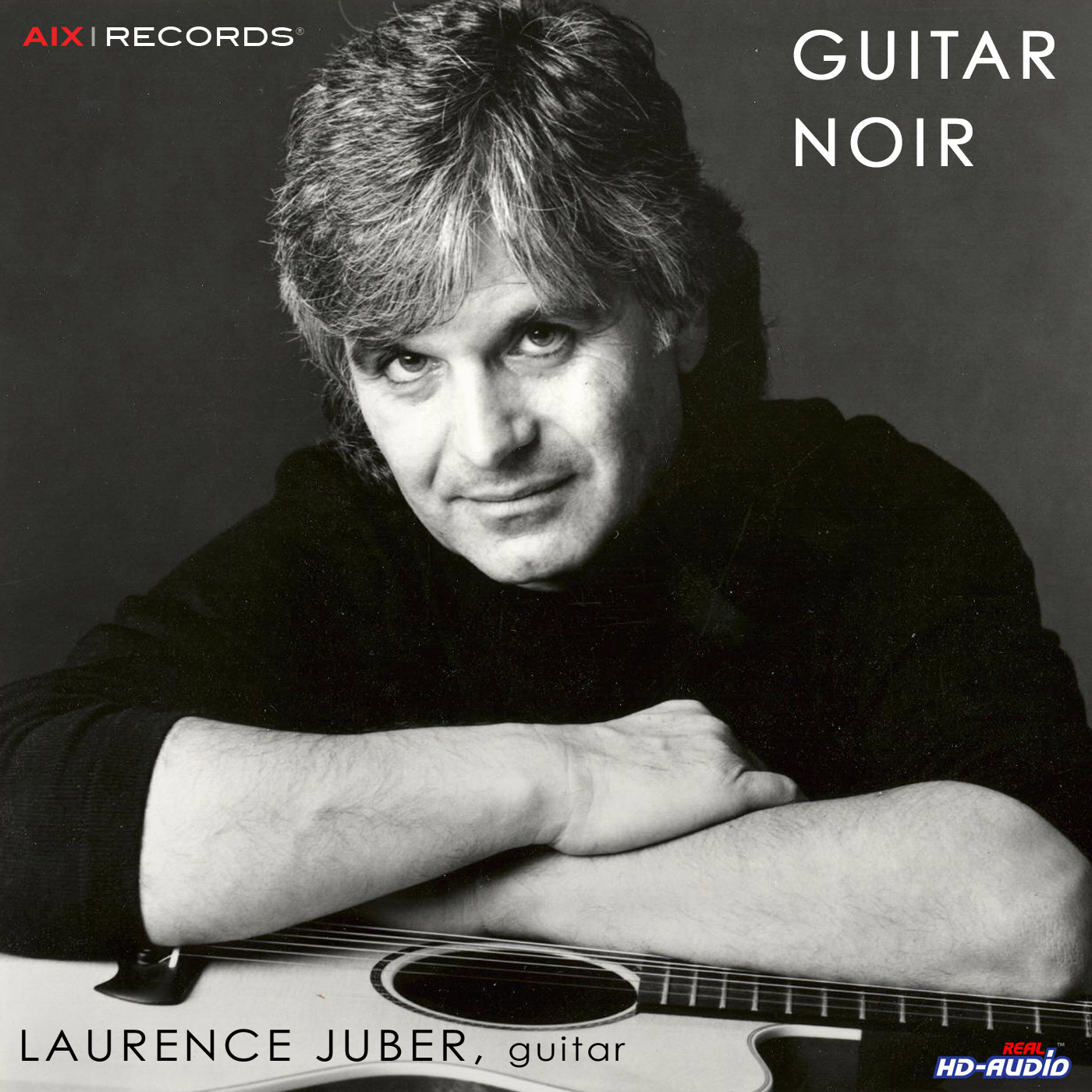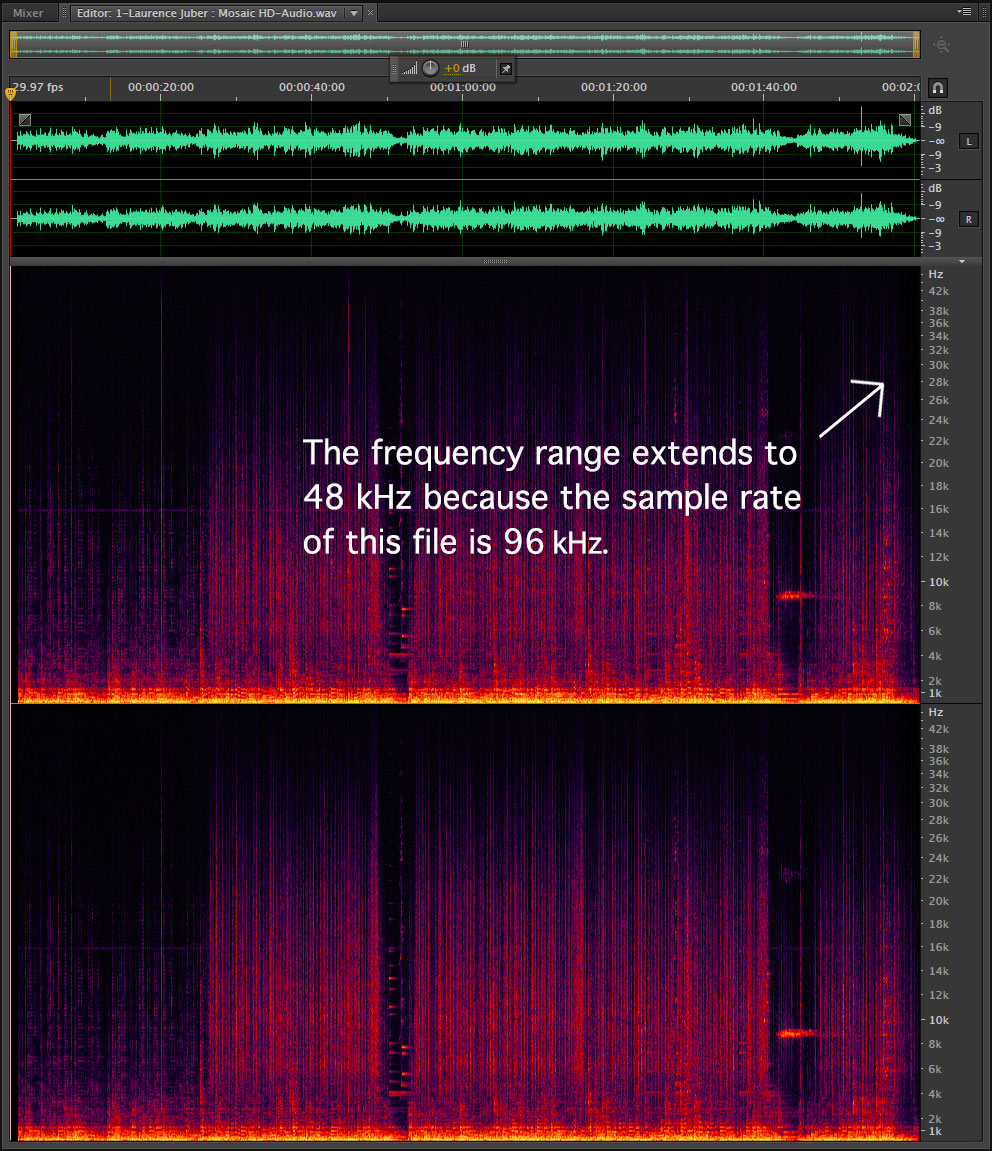How to Read a Spectragram: Part II
So yesterday, I think we got the basics out of the way on what a spectragram is and what the various axes represent. We looked at a standard resolution audio track. The track was a 44.1 kHz/16-bit stereo PCM file. Today, let’s take a look at a real high-resolution audio files. I’ll use one of my favorite tracks…one that I recorded and which was actually recorded using high-resolution audio capable equipment. It was not transferred from an older analog tape or upconverted from a standard definition digital file.
In 2002, I recorded my best selling recording, “Guitar Noir”, a DVD-Audio/Video disc by Laurence Juber, ex-Wings guitarist and acoustic finger style Guitar Player Magazine award winner. All of the recordings I have done for my label originate as 96 kHz/24-bit PCM tracks. I have no interest in using DSD of any flavor, analog tape with its limited dynamic range or 192 kHz or higher esoteric DXD etc. I have yet to hear or measure a recording that beats one of my own in both sonics and specifications. Using 96/24 PCM captures everything that I need to “wow” my customers and audiophiles that experience our demos.
One of the tracks from “Guitar Noir” won the 2002 “Demmy Award” from the CEA for “Best High-Resolution Surround Track”. I have the trophy in a glass case right outside of my office. Considering who we beat (The Grateful Dead, Sting and Wynton Marsalis), I was pretty stoked by the award AND impressed that the people doing the evaluating actually listened to the track rather than give the award based on name recognition (the NARAS “Grammy” folks bypassed one of my recording for “best engineered recording” because they didn’t have the equipment to play it!).
Here’s the spectragram of “Mosaic” by Laurence Juber (NOTE You can download this track in full 96 kHz/24-bit Stereo PCM at the FTP site):
Figure 1 – The spectragram of Laurence Juber’s “Mosaic” track at 96 kHz/24-bits [click to enlarge].
The most important change in this plot is that the vertical axis now extends to 48 kHz rather than the 22.050 kHz limit in yesterday’s spectragram. Why is this? Because this file was recorded at 96 kHz or more than twice the rate of standard definition CD. This means that a PCM recording at 96 kHz has the “potential” to capture and reproduce ultrasonic frequencies (those that are higher than 20 kHz). I stress the word potential because as we saw just a couple of days ago, the “Jazz Prologue III” by Design w/ Sound download files, which might seem to have much better specifications than my own track (you can purchase a 96, 192 or 384 kHz version), didn’t contain any information above 22 kHz. The ultrasonic region of the spectragram was completely black! You’re buying gigabytes of digital silence. The only version of his “Lush Life” download that eclipsed 20 kHz was the DSD version AND the material above 20 kHz was nothing but uncorrelated noise due to the 1-bit encoding used. Do you start to get why…at least intellectually…I don’t understand the appeal of DSD?
Take a look at the spectragram of the “Mosaic” track. There is lots of musical information above 20 kHz. It’s pretty obvious that the instruments are capable of producing frequencies above 20 kHz, the microphones and recording equipment (running at 96 kHz/24-bits) that I used to capture the performance actually recorded the ultrasonics AND the files on the DVD-Audio disc or on our download site contain a level of fidelity that far surpasses traditional CDs, SACDs and even DXD files.
I use the “Mosaic” track as a benchmark recording because it has so much dynamic range, there’s lots of ultrasonic partials and it is a killer piece of music. Download the file and check it for yourself (you can get it free by requesting the FTP credentials).
Here’s a review of the “Guitar Noir” project from 2003…
“I got the Guitar Noir album yesterday (Monday), which surprised me as I’d only ordered it last Friday. I’ve only had a chance to listen to it for one complete pass, so I can’t yet compare the DVD-Audio to the Dolby Digital (Audience), the DTS (Stage) and the 96 Khz/24-bit PCM stereo mixes. From listening to the DVD-Audio, I’m convinced that it’s the closest thing I’ve ever heard to having a band play live in my home theatre. The music won’t be for everybody (it’s kind of light acoustic jazz), but it’s absolutely incredible sounding. You feel like you could reach out and touch the guitar and bass and the percussion has a clarity unlike any other recording I’ve ever heard.”
I’ll continue talking about spectragrams tomorrow. We’ll look into how you can use this tool to spot problems or irregularities with a track.


